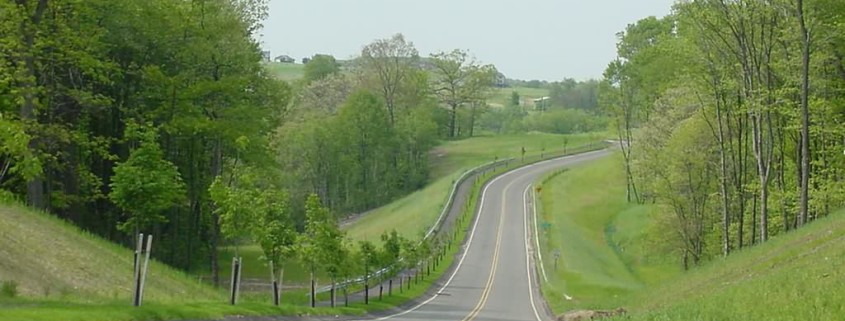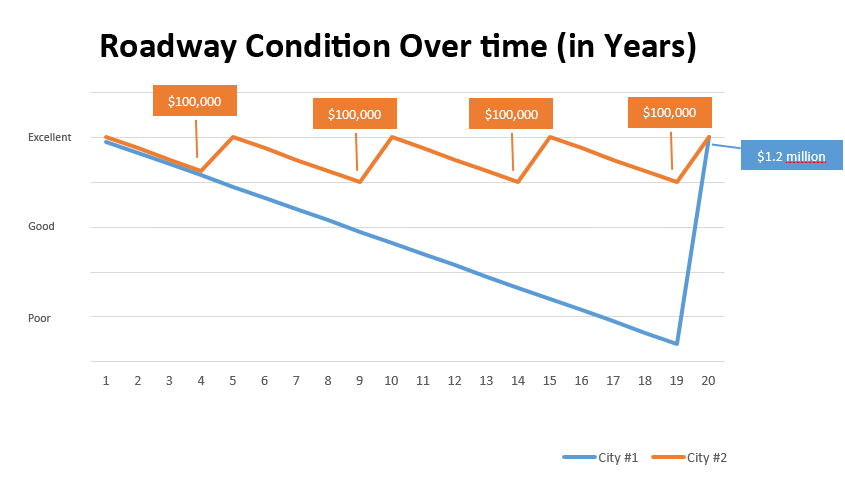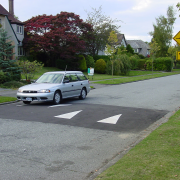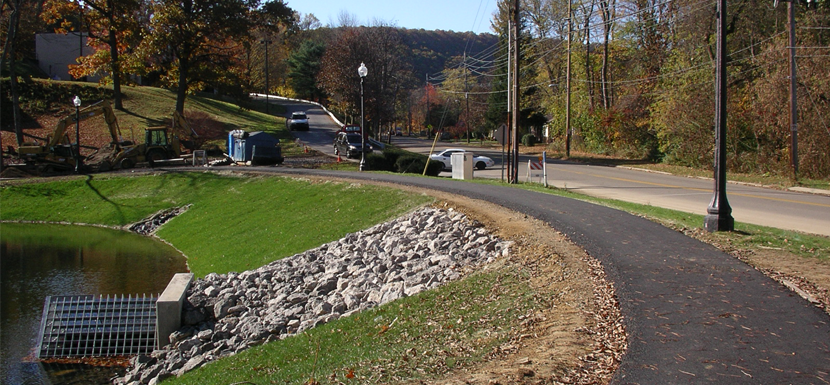
This article was published in the July 2010 issue of Borough News magazine and is reprinted here with their permission.
Installing traffic control devices such as roadway signs, traffic signals and pavement markings might appear to be a simple task, but borough officials are frequently surprised to learn that they must follow certain guidelines from PennDOT and the Pennsylvania Code (Vehicle Code) before installing most types of signage in their community. Requirements differ significantly on Borough Roads and PennDOT Roads.
What follows are some basic guidelines on what borough officials can and cannot do regarding the installation of roadway signage, traffic signals, and pavement marking.
On Borough Roads
The Borough has sole discretion on the installation of the following traffic control devices, but they must conform to the Vehicle Code, and, in many cases, must be supported by an engineering study or justification.
Stopping, Standing and Parking Restriction Signs
Boroughs must show that one of nine conditions has been met. These conditions include such considerations as roadway width, traffic flow, and sight distances, among others.
One-Way Street Signs
A one-way street can be established if several conditions are stratified such as traffic flow, geometric considerations and emergency vehicle access.
Stop or Yield Intersection Signs
Stop or yield intersection signs can be installed based on geometric conditions and traffic flow and traffic safety considerations. For all-way or multi-way stop intersections specific traffic volume guideline criteria or safety criteria must be met.
Turn Restriction Signs
Turn lane restriction signs can be installed if the restrictions would benefit safety or capacity of the intersection.
Speed Limit Signs
Boroughs must complete engineering and traffic studies to show the need for a speed reduction. In general the statutory guidance is that, in a residential district, the speed limit should be posted at 25 mph. Within an urban district, which can be generally described as an area that is built up with business or industry, the speed limit should be posted at 35 mph. All other limits should be 55 mph unless an engineering study determines that the posting should be different. These studies include spot speed studies, sight distance, and geometric studies.
Truck or Weight Restriction Signs
Structural analysis, testing and engineering judgment of the roadway’s operating characteristics and setting must be considered before a truck or weight restriction sign can be installed.
Pedestrian Crossing Restriction Signs
Pedestrian crossing restriction signs can be installed provided a pedestrian needs study is completed and supports the restriction.
PennDOT approval is required for the following traffic control devices even along borough roads:
Traffic Signals and Their Associated Pavement Markings and Signage
A traffic signal installation must be supported by a traffic signal needs study, which evaluates safety, traffic volumes, and geometric considerations.
No Turn on Red Signs
In the event that a Borough should desire to restrict right turns at an existing signal considerations for sight distance, geometric and safety must be reviewed.
School Zone Speed Limits
A speed zone can be established during the hours of arrival or departure of school students walking along or across a roadway adjacent to the school. This can be accomplished through coordination with the school district and PennDOT.
Signage for Traffic Restrictions on Borough Roads Approaching an Intersection with a State Road, such as:
- Stop or Yield Signs and pavement markings
- Turn restriction signs
- One-way signs and lane use control signs
On State Roads
Pennsylvania Code spells out when municipalities have the authority to install, revise or remove traffic control devices and when such devices are solely under the authority of the state (PennDOT).
Traffic control devices that boroughs can install, revise or remove without PennDOT approval:
- Street name signs
- Crosswalk markings (except those at the middle of a block)
- Parking stall markings (except new angle parking)
- Curb markings at intersections
- Parking meters
- Stopping, standing, or parking restriction signs
Traffic control devices that boroughs can install, revise or remove only with PennDOT approval
Even though borough officials are responsible for the installation, maintenance and operation of the following types of traffic control devices, they must obtain PennDOT approval before any new devices are added. They must also obtain PennDOT approval before any existing signs or markings are changed:
- Traffic signals and associated signs and markings
- Speed limit signs of 35 mph or less (except those signs listed above as solely PennDOT’s responsibility)
- Stop signs and yield signs at intersections
- Pedestrian group signs
- Street Closed signs
- Entrance and crossing signs
- Children Group signs
- Parking Area signs
- Bicycle Route signs
- Traffic Signal Speed signs
- Trail group signs
- Pavement markings for Mid-block crosswalks
- Pavement markings for bicycles
- Signs and banners with the intent of advertising that are to be placed across or within PennDOT right-of-way
Traffic control devices that can only be installed, revised or removed by PennDOT
PennDOT has oversight responsibilities and authority over the following types of traffic control devices; they can only be installed, revised or removed by PennDOT:
- Hazardous grade speed signs
- Bridge speed limit signs
- Speed limit signs at PennDOT rest areas, welcome centers and weigh stations
- Deer crossing and elk crossing signs
- Horse-drawn vehicle signs
- Left turns and cross traffic signs
- Left turns and watch for turn signs
Because of the complexity of the guidelines and the engineering studies that are required, boroughs are well-advised to enlist the support of a professional engineer when considering the installation, revision or removal of any traffic control devices in their community. A professional engineer with traffic and transportation expertise and ample experience working with state and local governments will be well-versed in the intricacies of traffic control requirements, saving borough staff the time needed to make sense of the web of policies, procedures and publications that govern traffic control in Pennsylvania.
It is further recommended that the professional engineer be certified as a Professional Traffic Operations Engineer (PTOE). A PTOE is a person who applies a comprehensive knowledge of technology and scientific principles acquired through study and experience to the supervision of day-to-day operation of traffic systems. To become certified as a PTOE one must have a valid license to practice engineering (P.E.), a minimum of four years of experience, and pass a written certification examination.







